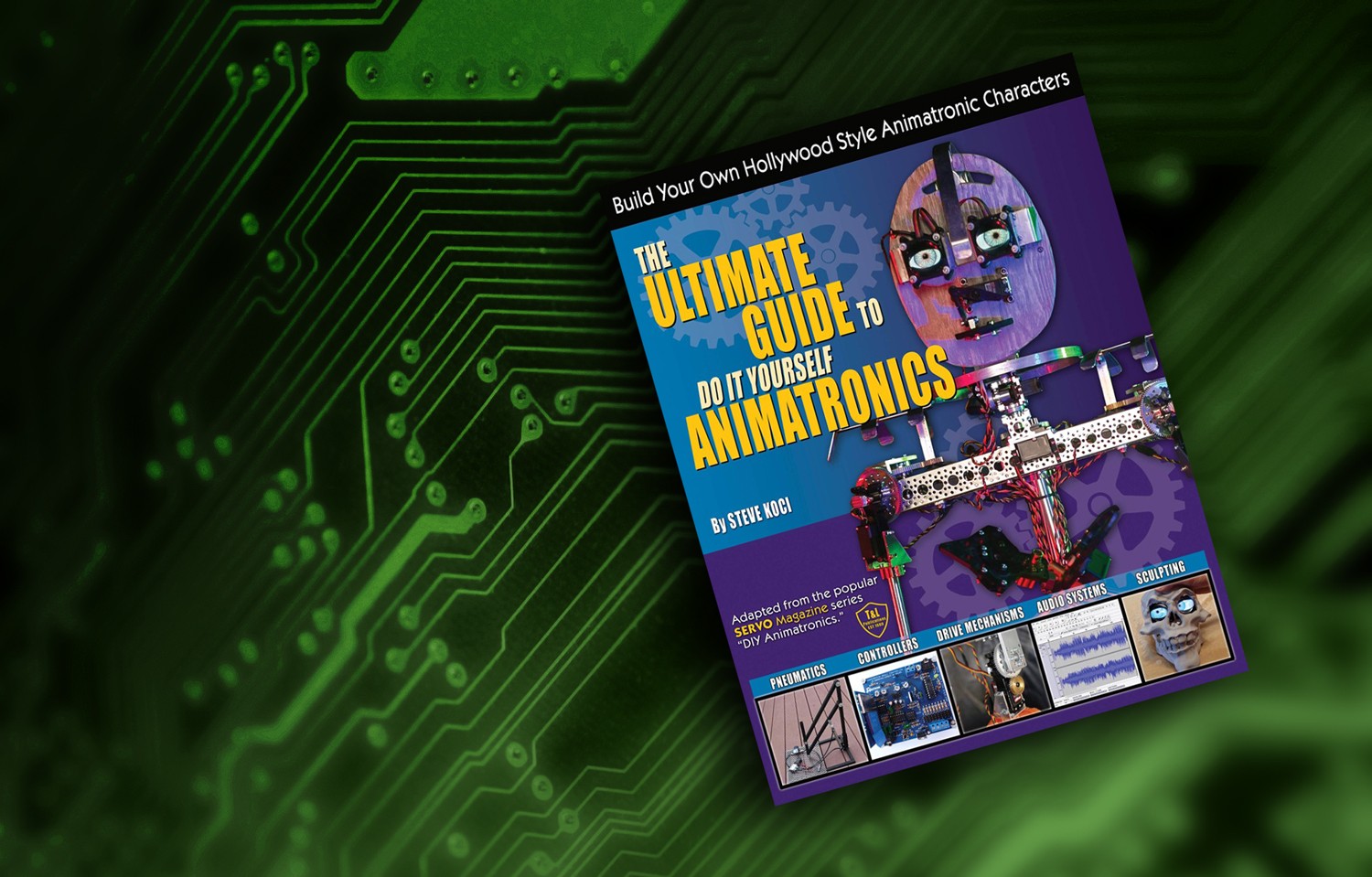The Ultimate Guide to DIY Animatronics by Steve Koci - Review

If you always wanted to learn more about the art of animatronics, you're in luck. Steve Koci, a master in the field, wrote a book based on a series of articles he wrote for SERVO magazine. What can you expect from his book? Here is my review!
DIY Animatronics
Animatronics and Robotics have a lot of points in common. I always saw animatronics as an art using robots as its paintbrushes. You can find a few tutorials scattered around the internet but real works on the subjects are rare. Luckily, Steve Koci ''lets you explore the fascinating world of animated character creation with the home hobbyist in mind'' with his book, The Ultimate Guide to DIY Animatronics. What he does is awesome! Just to give you a general idea of what you can create, make sure you check out his YouTube channel!
First Look
After I got my hand on the book (available here), I quickly glanced through the pages and the first thing I noticed was the number of pictures. Of course, there is also a lot of detailed information attached. It can be a bit intimidating at first, you will see so many different actuators, circuit boards, mechanical parts and materials that you may think to yourself ''Well, that's an expensive hobby''. While it is true that animatronics (or robotics) parts can be expensive, it is still possible to start small and work your way up.
Actual Review
This book can easily be considered as the equivalent of the Robot Builder's Bonanza (book considered to be the most complete book on hobby robotics) but for Animatronics. Steve Koci's book will take you through every aspect of the subject. The first few chapters will cover the basics stuff like setting up a work area with storage, tools, and tips on how to get started.

It then covers pretty much all the motors and actuators you can use like servo motors or linear actuators beginning with a full chapter on wiper motors. You'll learn how to use them, what you need to control them as well as mounting tips to attach the motors to your projects (which is a bigger problem than it seems).
The second half or so will tell you all about the technologies currently available you can use to build an animatronic character. The author puts a lot of effort in giving tips and tricks to make your character more lifelike with ideas like LCD eyes (see video above), building bodies out of foam, adding sensors, voices and even how to build very good-looking hands.
The last few chapters will guide you through the design aspect of various projects. You will be able to see the author's way of tackling different types of animatronics projects and how he creatively designs and builds his characters.
Conclusion
This book is very complete. It definitely belongs next to the Robot Builder's Bonanza on any robot builder's library. The author is currently working on a second edition and it can only get better from there.
One thing that I would have loved is the addition of small projects throughout the books that could help beginners learn the concepts. Allowing them to begin small instead of tackling a big project right away which can be discouraging at first. This is definitely something I hope we will see in the next edition.
I really hope to see more animatronics projects here on the community, if you built one makes sure to share it here so we can see it !
Thanks for helping to keep our community civil!
This post is an advertisement, or vandalism. It is not useful or relevant to the current topic.
You flagged this as spam. Undo flag.Flag Post


